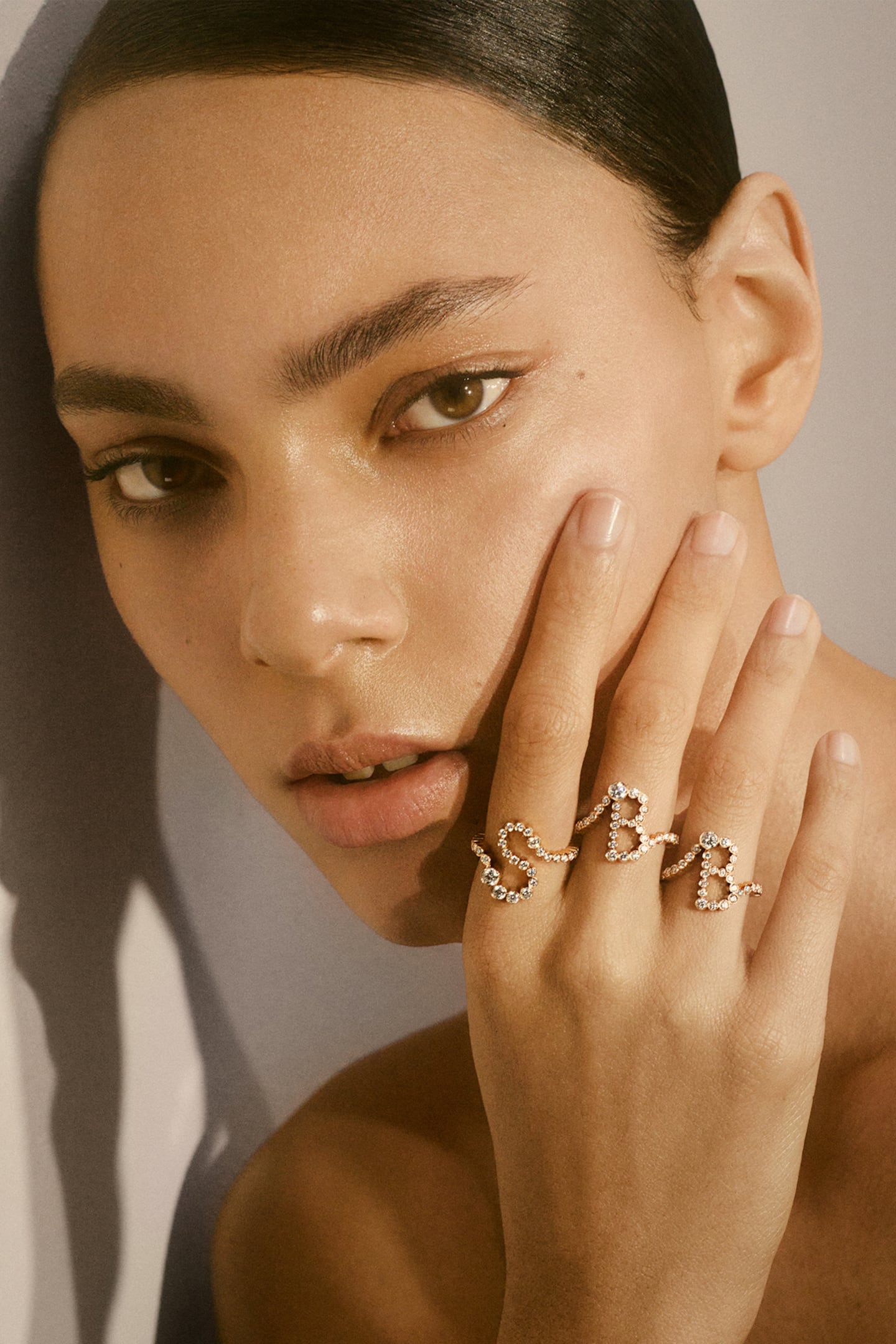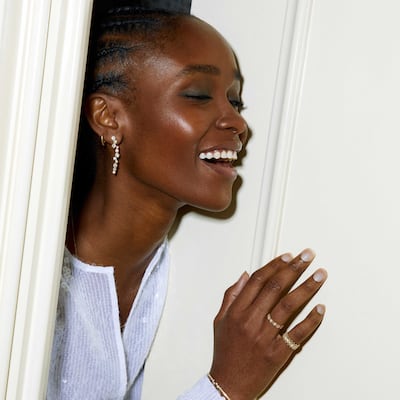
The Business of Fashion
Agenda-setting intelligence, analysis and advice for the global fashion community.

Agenda-setting intelligence, analysis and advice for the global fashion community.

Diamonds are paying dividends for Sophie Bille Brahe.
When the Danish fine jewellery label launched in 2011, it became best known for its sculptural pearl pieces, which were stocked by retailers like Net-a-Porter, Matches and Bergdorf Goodman. But since Covid-19, customers have clamoured for jewels that sparkle, gravitating heavily towards Sophie Bille Brahe’s diamond offering — and brand turnover has almost tripled compared to 2019.
It helps that diamond jewellery is significantly pricier. Sophie Bille Brahe’s “Tennis Collier” bestselling necklace, a delicate string of diamonds graduating in size, costs €45,000 ($47,314). Its popular Peggy necklace, which uses asymmetric pearls, sets customers back a mere €4,000.
Sophie Bille Brahe isn’t the only brand benefitting from the consumer shift further upmarket. Since the start of the pandemic, shoppers have gone all-in on costly stones and fine metals. Cartier, Van Cleef and other high-end houses are reporting booming sales. Fine jewellery, manufactured using precious metals and gemstones, is the fastest growing category at London-based Completedworks, which also sells more affordable “demi-fine” designs. (Made using crystals and gold vermeil rather than precious materials, demi-fine pieces retail under £500; prices for fine pieces go up to £25,000.) The diamonds don’t have to be dug out of the ground to be in-demand: lab-grown diamond jewellery brand Kimaï says sales are up 60 percent on last year.
ADVERTISEMENT
“People are really willing to invest in pieces they will cherish,” said Sophie Bille Brahe CEO Anne Sofie Møller.
The boom is all the more remarkable because it has persisted long after other pandemic fads faded. This year, sales of luxury fine jewellery are forecast to hit $51.3 billion, up almost 10 percent on last year and an increase of 32 percent on pre-pandemic levels, according to data from market research firm Euromonitor International. By contrast, the surging demand for loungewear sets and at-home exercise equipment has tempered off.
And as the luxury sector’s explosive post-pandemic growth spurt begins to moderate — particularly in the US, where aspirational shoppers have already pulled back amid economic uncertainty and the end of Covid-era stimulus cheques — fine jewellery remains a bright spot. Right now, the luxury sales are driven by uber-wealthy shoppers, who are gravitating towards higher-ticket items. In North America, luxury fine jewellery sales are still expected to grow 6 percent this year, according to Euromontior forecasts; in Asia, where recovery in the key China market remains uneven, growth is forecast to outperform the global market at 13 percent.
“People just want to spoil themselves,” said Euromonitor analyst Kauthar Jakoet. “For many the pandemic was relatively traumatic; just the ability to walk into a store and buy what you wanted was seen as a luxury for people.”
As traditional houses like Cartier and Tiffany raise prices and consolidate their position at the top end of the luxury space, some smaller brands with a more fashion-inflected aesthetic are seeing an opening in the market for high-end, contemporary designs at a more competitive price point compared with many of the heritage names.

Kimaï founders Sidney Neuhaus and Jessica Warch initially kept designs simple when the brand launched in 2018, wanting to ensure prices remained at the entry level of the fine jewellery segment. Now, however, the brand is pushing into higher price brackets with larger styles and bigger stones, as demand for bespoke pieces in the €5,000 to €20,000 range soars. Bespoke services for engagement and bridal, in particular, are a big focus for the label, said Warch.
“There’s a lot of brands that have positioned themselves as approachable, digital [first brands], and have been great at growing. And then there’s loads of high-end brands that have been amazing at building lifelong brands, like the Bond Street jewellers. What we were missing is really an in-between,” said Warch.
Today, Kimaï — which is also stocked at Net-a-Porter, Nordstrom and Browns — has introduced chunkier pieces to its permanent collection, such as its €6,000 Splendido earrings, €5,000 tennis bracelet and €2,200 Dolla ear cuff, which sit alongside more affordable styles like its €300 pear stud earring and €600 Amie chain bracelet.
ADVERTISEMENT
Brands are also catering to a more eager consumer base. Ileana Makri, who has run her namesake fine jewellery business since 1998, has seen a mindset shift among clients first hand: before, big purchases tended to be more closely tied to a particular event or occasion, whereas now, she sees more clients “go for it the minute they see it.”
“People are living in the present,” said Makri. “They don’t want to wait for an occasion to buy or wear, they’re living in the moment.”
Private clients are a booming business for Sophie Bille Brahe, helping to boost its higher-margin direct-to-consumer business to drive more than half of company revenues. Møller, the brand’s CEO, said “travelling showrooms” have helped build these kinds of relationships, particularly in the US, a fast-growing market for the brand that currently drives 35 percent of sales.
Sophie Bille Brahe will take over hotel suites in cities like Los Angeles and Las Vegas, reach out to locals that have shopped on the brand’s website before, and invite them to meet the team, discover the full collection and try on pieces.
“It might not always lead to a sale the same day, but we would see people then purchasing a few months later,” said Møller, noting many clients will fly into Copenhagen to visit the brand, possibly tagging on a trip to Noma while they’re in town.
Instead of a traditional store, the brand entertains clients at its light-flooded showroom, which opened just as travel began to ramp up again after the pandemic. The space is located in the centre of town, but has no frontage at street level. “Up here it’s more like an atelier or an apartment, with lamps and furniture I have made. It works as a store, but you need to make an appointment,” brand founder and creative director Sophie Bille Brahe said.
It’s a set-up that provides a level of privacy and intimacy that makes the shopping experience feel more elevated, with every client feeling like they’re receiving the VIP treatment. The brand is currently looking for a space to replicate the set-up in New York.
“I don’t think we would have at all seen the same growth if we were on a shop floor,” Bille Brahe said.
The French house showcased its new Tweed-inspired high jewellery collection in London this week. CEO Frédéric Grangie sees the ‘booming’ category as a key opportunity to elevate the Chanel brand.
Menswear has a hot new category: signet rings, beaded bracelets and silver chains — a trend driven by shifting gender norms and the overall casualisation of fashion.
Synthetic stones now make up 10 percent of the diamond market, highlighting the ways in which new materials are rewriting the rules of what is considered luxury.
Mining company Anglo American is considering offloading its storied diamond unit. It won’t be an easy sell.
The deal is expected to help tip the company into profit for the first time and has got some speculating whether Beckham may one day eclipse her husband in money-making potential.
The designer has always been an arch perfectionist, a quality that has been central to his success but which clashes with the demands on creative directors today, writes Imran Amed.
This week, Prada and Miu Miu reported strong sales as LVMH slowed and Kering retreated sharply. In fashion’s so-called “quiet luxury” moment, consumers may care less about whether products have logos and more about what those logos stand for.